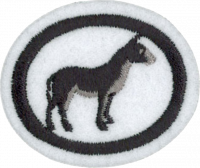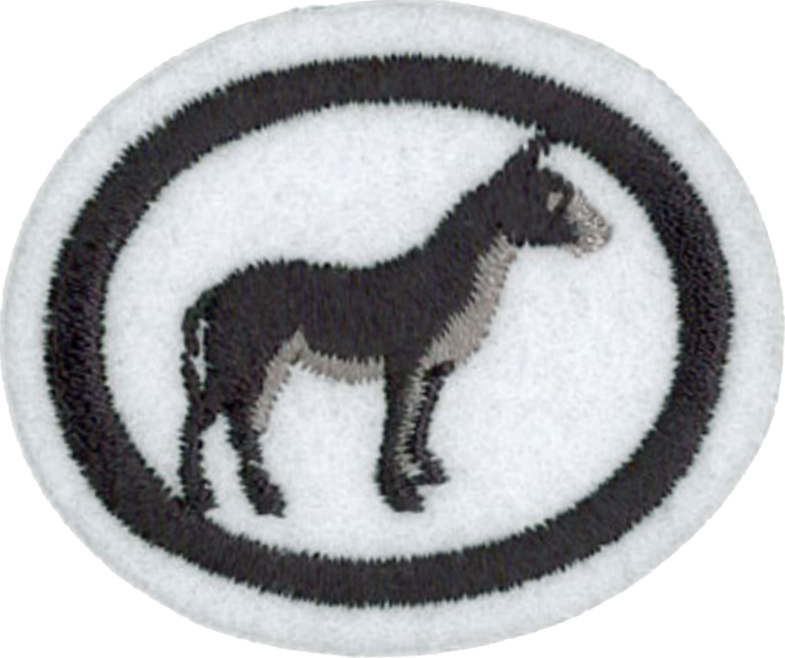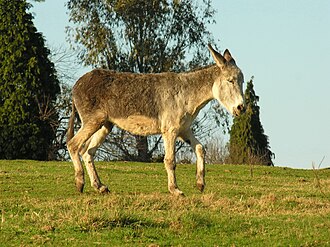AY Honor Livestock Answer Key
1
- Draft Horses
- Draft horses are recognizable by their tall stature and extremely muscular build. In general, they tend to have a more upright shoulder, producing more upright movement and conformation that is well-suited for pulling. They tend to have short backs with very powerful hindquarters, again best suited for the purpose of pulling. Additionally, the draft breeds usually have heavy bone, and a good deal of feathering on their lower legs. Many have a straight profile or "Roman nose" (a convex profile). Draft breeds range from approximately 16 hands high to 19hh and from 1,400 to 2,000 lbs.
- Light Horses
- Light riding horses such as Arabians, Morgans, or Quarter Horses usually range in height from 14.0 (142 cm) to 16.0 hands (163 cm) and can weigh from 386 kilograms to about 540 kg (850 to 1200 lb). Larger riding horses such as Thoroughbreds, American Saddlebreds or Warmbloods usually start at about 15.2 hands (157 cm) and often are as tall as 17 hands (172 cm), weighing from 500 kg to 680 kg (1100 lb to 1500 lb).
2
2a
2b
2c
2d
2e
3
- Mules are almost always sterile. They are a cross between a male donkey and a female horse. The sterility is attributed to the different number of chromosomes the two species have: donkeys have 62 chromosomes, while horses have 64. Their offspring thus have 63 chromosomes which cannot evenly divide.
- Mules are generally considered to be more intelligent than either horses or donkeys.
- Its short thick head, long ears, thin limbs, small narrow hooves, short mane, absence of chestnuts (horny growths) inside the hocks, and tail hairless at the root, make the mule look like a donkey.
- Its height and body, shape of neck and croup, uniformity of coat, and teeth, make it look like a horse.
- The mule possesses the sobriety, patience, endurance and sure-footedness of the donkey, and the vigour, strength and courage of the horse.
- Their hooves are harder than horses, and they show a natural resistance to disease and insects.
- They are capable of striking out with any of their hooves in any direction.
4
The Spanish brought donkeys, called "burros" in Spanish, to North America, where they were prized for their hardiness in arid country and became the beast of burden of choice by early prospectors in the Southwest United States. In the western United States the word "burro" is often used interchangeably with the word "donkey" by English speakers. Sometimes the distinction is made with smaller donkeys, descended from Mexican stock, called "burros," while those descended from stock imported directly from Europe are called "donkeys."
5
Milk Cattle
Adventist Youth Honors Answer Book/Dairy cattle breeds
Beef Cattle
Adventist Youth Honors Answer Book/Beef cattle breeds
6
- Jersey
- Brown Bessie, the famous champion butter cow of the Chicago World's Fair dairy test, averaged over 40 pounds (18 kg) of milk a day for five months, and made 3 pounds (1.3 kg) of butter a day several times.
- Guernsey
- Guernsey cows produce around 6000 liters per cow per year, or 16.4 liters (4.3 gallons) per day.
- Holstein
- Recorded cows in the USA produced 22,347 pounds (10,158 kg) of milk at 3.64% fat and 3.05% protein.
7
The word milch is German for milk, so one might correctly infer that the milch goat is one that has been bred for milk production. An angora goat is bred for wool production.
Adventist Youth Honors Answer Book/Goat Breeds/Saanen
Adventist Youth Honors Answer Book/Goat Breeds/Toggenburg
Adventist Youth Honors Answer Book/Goat Breeds/Nubian
Adventist Youth Honors Answer Book/Goat Breeds/British Alpine
8
Adventist Youth Honors Answer Book/Sheep Breeds/Merino
Adventist Youth Honors Answer Book/Sheep Breeds/Rambouillet
Adventist Youth Honors Answer Book/Sheep Breeds/Shropshire
Adventist Youth Honors Answer Book/Sheep Breeds/Hampshire
Adventist Youth Honors Answer Book/Sheep Breeds/Lincoln



